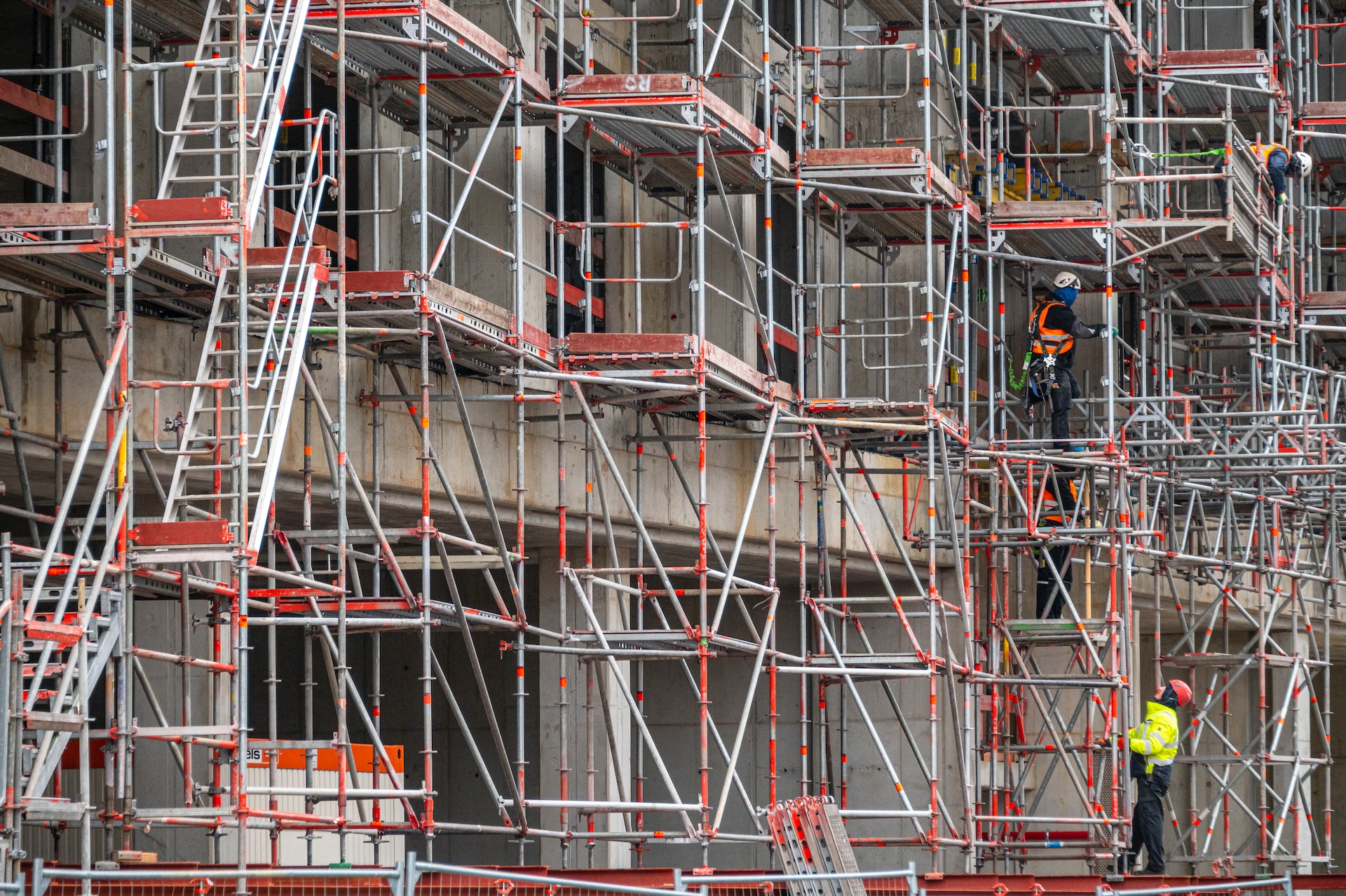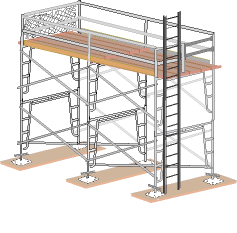Temporary Roof Scaffolding Experts Providing Secure and Reliable Installations
Wiki Article
Discovering the Various Types of Scaffolding Utilized in Construction Jobs
The construction industry relies greatly on numerous kinds of scaffolding to fulfill certain job needs, each offering distinct benefits and applications. Typical frame scaffolding supplies a sturdy foundation for basic jobs, while suspended scaffolding is essential for job on high-rise structures.
Standard Structure Scaffolding
Conventional structure scaffolding is among the most commonly used methods in the building sector because of its robustness and versatility. This system includes vertical and straight frames that are assembled to create a stable system for products and employees. The main parts include vertical blog posts, straight ledgers, and angled braces, which with each other give a strong structure that can sustain substantial tons.Among the crucial advantages of traditional structure scaffolding is its flexibility to different construction jobs, varying from property buildings to large industrial structures. The modular layout enables for simple assembly and disassembly, making it efficient for both lasting and short-term projects. In addition, the system can be customized in elevation and size, fitting various structure layouts and website problems.
Safety is vital in scaffolding applications, and conventional structure systems are equipped with guardrails and toe boards to avoid falls and make certain worker defense. Additionally, routine inspections and adherence to security laws are vital in maintaining the stability of the scaffold. In general, standard frame scaffolding stays a basic choice in the building sector, giving a dependable platform for labor and improving general task efficiency

Suspended Scaffolding
Suspended scaffolding offers a distinct solution for building and construction tasks that call for accessibility to elevated surfaces, particularly in circumstances where traditional frame scaffolding may be impractical. This kind of scaffolding is usually suspended from the roof covering or upper levels of a framework, using a system of systems, wheels, and ropes to develop a functioning area that can be adapted to numerous elevations.One of the main benefits of suspended scaffolding is its adaptability. It can be easily rearranged or lowered to suit modifications in construction requirements, making it suitable for tasks such as home window installation, façade work, and upkeep on skyscrapers. Furthermore, the very little footprint of put on hold scaffolding permits far better usage of ground area in city environments, where room is usually minimal.
Safety and security is a critical consideration in the use of put on hold scaffolding. On the whole, put on hold scaffolding gives a efficient and effective option for accessing hard-to-reach areas in different building and construction scenarios, enhancing both productivity and safety on site.
System Scaffolding
System scaffolding, frequently concerned as a modern-day remedy in the scaffolding industry, consists of pre-engineered elements that can be rapidly set up and adjusted for various construction tasks. Scaffolding. This kind of scaffolding is identified by its modular design, which enables convenience and performance on work sites, accommodating architectural requirements and various heightsgo to website Typically made from high-strength steel or light weight aluminum, system scaffolding uses improved durability and stability. The components include vertical posts, horizontal ledgers, and diagonal dental braces, which interconnect firmly, guaranteeing a durable structure. The layout commonly integrates standard fittings, simplifying assembly and disassembly processes, thereby lowering labor time and prices.

Rolling Scaffolding
Rolling scaffolding is a versatile alternative to conventional fixed scaffolding, made for movement and convenience of use on building and construction sites. This sort of scaffolding contains a platform supported by frameworks with wheels, permitting employees to easily move it as needed. The flexibility function substantially enhances performance, as it reduces downtime associated with constructing and taking apart dealt with scaffolding.Commonly constructed from lightweight materials such as light weight aluminum or steel, rolling scaffolding supplies a strong yet portable option for projects needing constant repositioning - Scaffolding. It is specifically beneficial in tasks such as paint, drywall installation, and electrical work, where accessibility to numerous elevations and places is necessary
Safety is critical in rolling scaffolding design, with features such as securing wheels to avoid unintended movement when being used, and guardrails to safeguard workers from falls. Furthermore, lots of designs are adjustable in height, accommodating various job demands.
Cantilever Scaffolding

The design of cantilever scaffolding commonly includes utilizing arms or brackets secured to a structure or structure, making it possible for the platform to expand outward securely. Security is vital; thus, these scaffolds need to be crafted to hold up against numerous tons and environmental conditions. Routine evaluation and upkeep are essential to ensure architectural stability and worker safety.
Cantilever scaffolding is favored for its adaptability and reliable use of area, making it a popular selection in metropolitan settings where space restrictions prevail. Moreover, it helps with less complicated access to high altitudes, eventually adding to More hints the overall performance scaffolding jobs of building projects. As with all scaffolding types, proper training and adherence to safety standards are important for workers utilizing cantilever scaffolding.
Conclusion
Standard framework scaffolding gives stability, while put on hold scaffolding provides convenience for elevated jobs. System scaffolding helps with fast assembly, and rolling scaffolding boosts mobility for varying work atmospheres.Traditional frame scaffolding provides a sturdy foundation for general tasks, while put on hold scaffolding is crucial for work on skyscraper frameworks.Rolling scaffolding is a functional option to conventional fixed scaffolding, made for flexibility and convenience of usage on building sites. As with all scaffolding types, correct training and adherence to safety and security requirements are important for workers utilizing cantilever scaffolding.
Typical framework scaffolding offers stability, while put on hold scaffolding uses convenience for raised tasks. System scaffolding facilitates fast assembly, and rolling scaffolding enhances wheelchair for differing work environments.
Report this wiki page